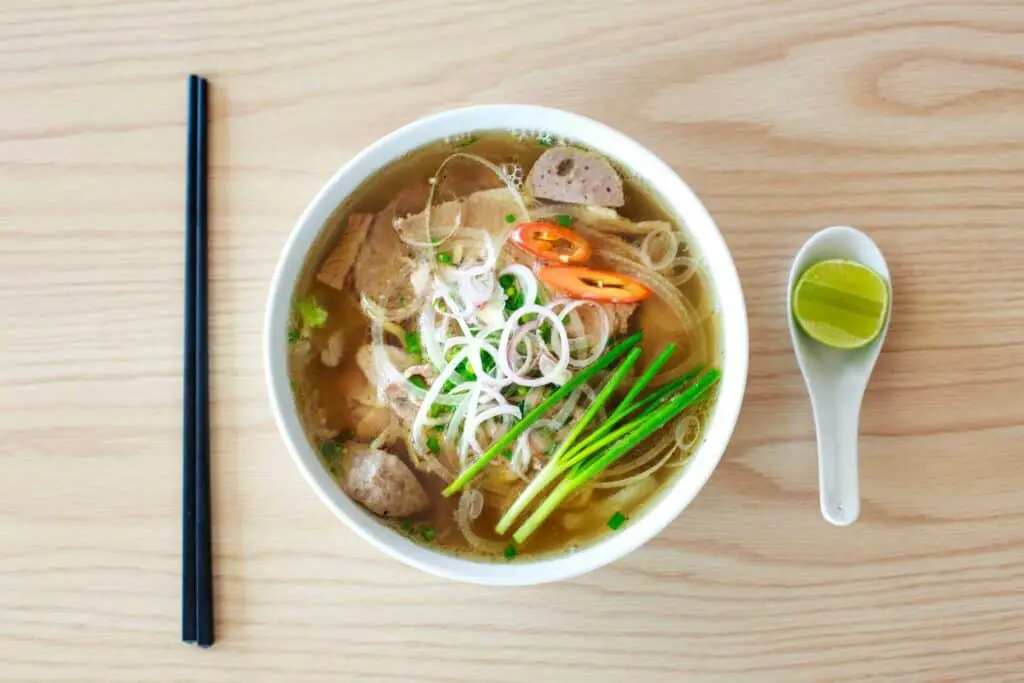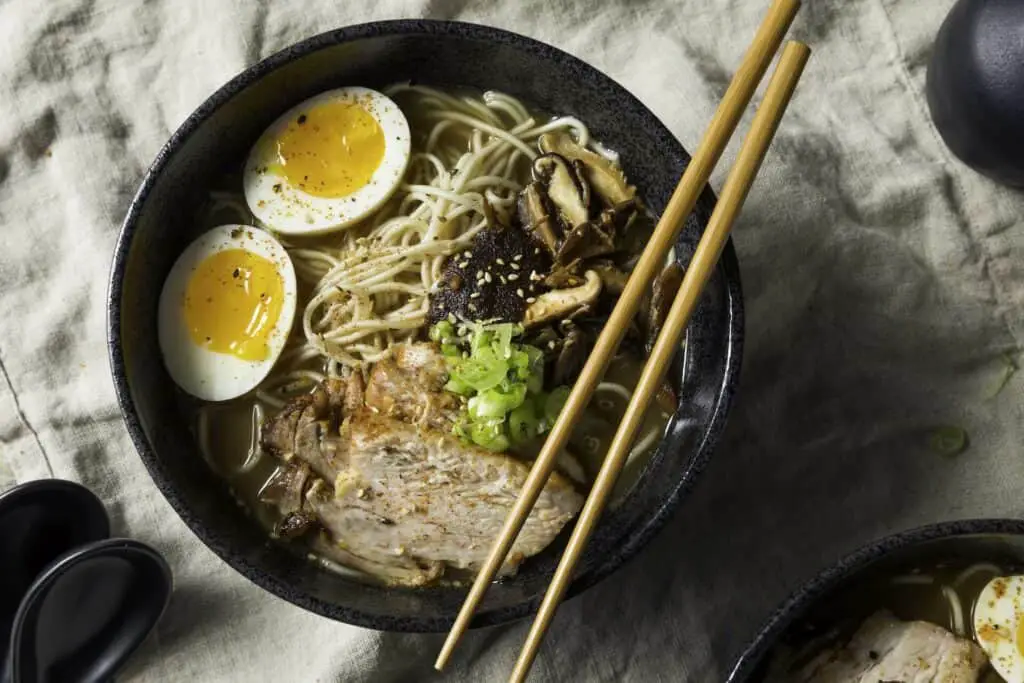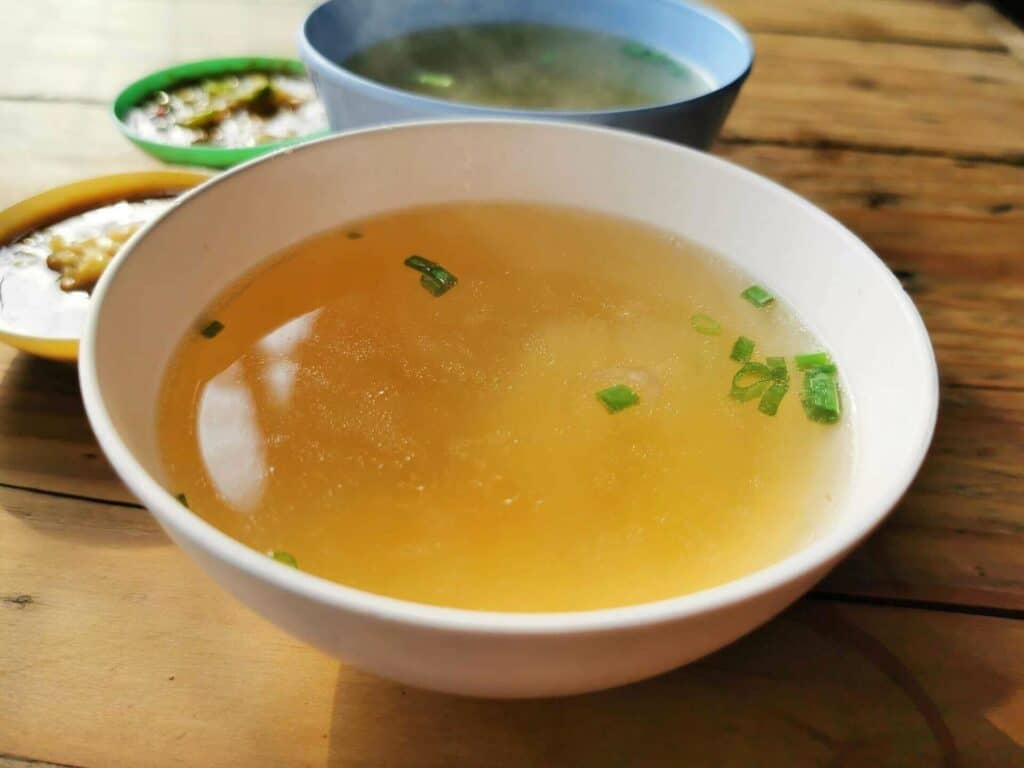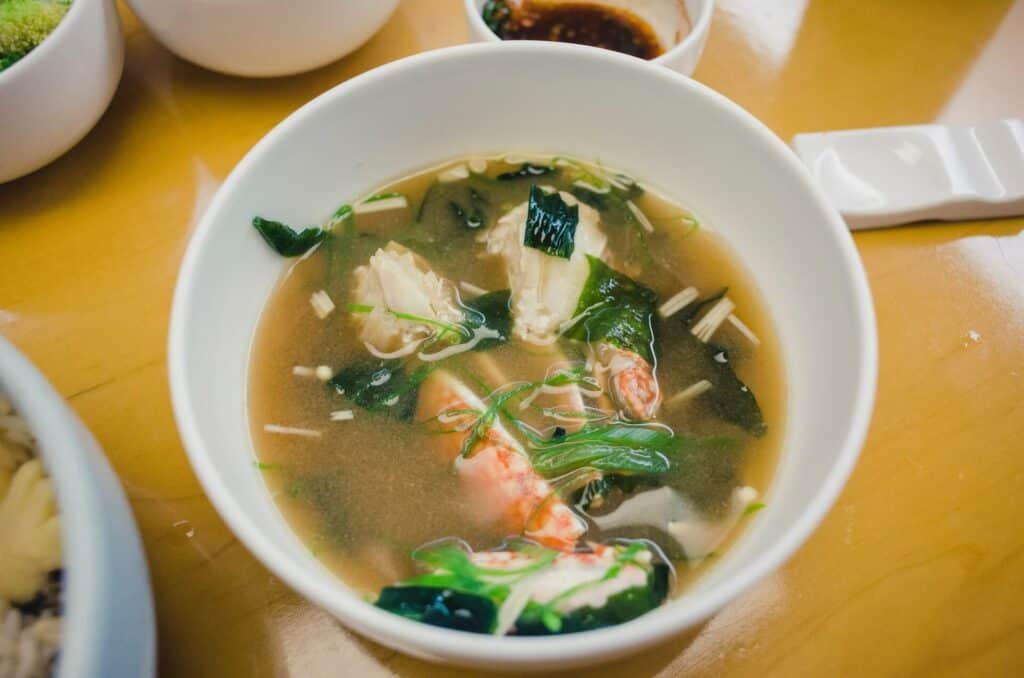Ramen, miso, and udon soups are all popular in Japan. But what about clear soup? Is it as popular? Learn more about this dish and its similarities to other brothy meals, and answer the question – is clear soup miso soup? Pull up a bowl, and let’s get started.
Clear soup, also known as suimono in Japan, is sometimes considered miso. This is because some people make the suimono broth with the paste of the same name, but otherwise, its base is almost always dashi stock. They are similar in toppings, but their broth recipes are different.


Is Clear Soup Miso Soup?
Clear soup is and isn’t miso. Sometimes, the name refers to plain broths from the paste without toppings; however, it more often refers to suimono, a type of clear broth made from dashi stock which is sometimes combined with miso.
If you don’t have access to dashi, you can make this dish with a dash of the paste and vegetable or chicken stock. Suimono can be made with different types of broth, so it is easy to find one that you prefer.
Suimono is a great way to get the necessary daily dose of healthy vegetables into your diet, and it’s effortless to make, making it an excellent option for busy weeknights or lazy weekends.
Miso and Clear Soup Share Similar Ingredients
Typical miso is made with a diluted paste of the same name in boiling water and added seaweed, cooked tofu, and spring onions. This is one of the most basic and classic recipes in a series of many.
Suimono has similar ingredients, except the liquid base is made by boiling seaweed, bonito flakes, and dried mushrooms. When you strain this liquid, called dashi, you get an excellent, tasty base for a hearty meal. So, their recipes are different, but they can be enjoyed similarly.
The most common ingredients in both soups are:
- Tofu,
- Seaweed,
- Chicken,
- Spring onions,
- Bamboo slices,
- Eggs,
- Pickled radishes,
- Mushrooms,
- Various vegetables.
What Are the Most Famous Japanese Soups?
Japanese cuisine has many dishes that could be considered national. From sushi and sashimi to miso and ramen, these are all signature foods associated with Japan. Undoubtedly, some of the most famous dishes in Japan have a liquid base. Ramen, udon, miso, and suimono are some options to order in a Japanese restaurant. You won’t make a mistake whichever one you order since they’re all incredibly delicious.
We Can’t Leave Out Ramen and Udon – Popular Soup Dishes In Japan
Is ramen a soup? Yes and no – ramen is a dish with a liquid base, so in the Western world, it could be considered such. For people from Japan, it’s a full-blown meal with a soupy foundation from animal or vegetable stock. There’s also miso ramen, where the liquid base is made from the paste.
Ramen has noodles, and miso typically doesn’t, but you can add whatever you like to it. Traditionally, it’s made with chunks of tofu, seaweed, and spring onions. Ramen has various forms, and even an instant version was created to help reduce the percentage of hunger in Japan, which you can cook in the microwave.
Is udon a broth? Udon is a type of noodle, typically served in broths of various kinds. Sometimes, even suimono might have udon noodles in it. So, udon isn’t one of the broths, but it does get used a lot in such dishes.

Clear Soup Is Also Called Suimono
Japanese clear soup, also known as suimono or osuimono, isn’t made from any paste or fermented ingredients. Typically, it’s made from dashi, a stock made from kombu seaweed, katsuobushi dried bonito flakes, and dried shiitake mushrooms.
Dashi is a base for many soups in Japanese cuisine, and it’s not as salty as miso. Sometimes, suimono is made with this paste, but that’s rare, as it has a higher concentration of sugar and salt; this dish is meant to be much healthier and plainer, free from salts and sugars.
Suimono is typically eaten during the colder months, but it can be an everyday food. It is made with various ingredients, including fish, seaweed, and vegetables; spring onions and pickled radishes are often added for extra nutrition. This is considered a very healthy food and is usually served as part of traditional cuisine.

Miso Is a National Japanese Dish
Miso soup is Japanese and a national dish at that. Some may think ramen is more popular, but miso is used in various recipes.
Essentially, miso in broth is a fermented soybean paste that gets diluted in boiling water. This dish has numerous health benefits – it’s low-calorie, low-fat, can impact the metabolism, and reduce inflammation. People in Japan often drink this for health.
This is a common ingredient in the cuisine of Japan, and it can also be used for marinades and dressings. Some popular dishes with it are grilled fish and tofu, but it can also be used as a condiment for rice and noodles. It is also a common ingredient in Japanese pickles (tsukemono).
Miso, Sake, and Soy Sauce Are All Made From Fermented Rice and Soybeans
Rice is a staple ingredient in Japan, but did you know that they also ferment it to make some of their most popular food and drinks? Sake, soy sauce, and miso are made from the same mold – koji mold that collects on rice.
Koji mold is cultured by infusing steamed rice with a mold called Aspergillus oryzae. Koji has several beneficial properties, including the ability to break down complex carbohydrates into simple sugars and the production of enzymes that can aid in the digestion of proteins. It’s also a good source of vitamins and minerals.

The Best Suimono Recipe Is the One With Your Favorite Ingredients
If you want a hearty and exciting meal that will instantly transport you to Japan, here’s what you’ll need: a pre-made dashi mix, sold typically on Amazon, your favorite vegetables and meat, some spring onions, mushrooms, and pickled radishes.
The ideal suimono can be whatever you want it to be, so you can taste Japan at home in no time, get healthy, and enjoy some of the world’s most delicious food. Make sure the liquid base is made correctly, according to the suitable recipes, and you’ll get a winning combination.